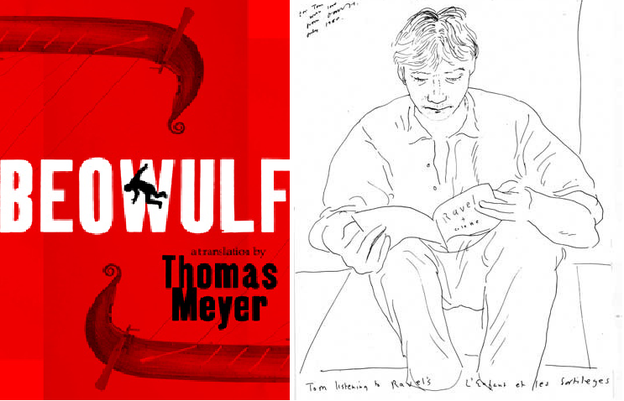Thomas Meyer — From the Beowulf translation: 'Fit Nine'

[NOTE. After two years in public view (the project goes back some forty years before that), Thomas Meyer’s translation/transcreation of the Beowulf poem stands out as an extraordinary example of the transposition of a major poem from one language or epoch to another. It’s my contention further that translation, as here, can serve as a form of composition, to make a new work in which the presence of the old is a necessary underpinning or shadow, as in the words of Gertrude Stein, rather than Pound in this instance: “As it is old it is new, and as it is new it is old, but now [she adds] we have come to be in our own way, which is a completely different way.” Here it’s the visuality of the work, along with its clarity of language, that first astounds us, or as Meyer has it rightly for this kind of project: “Instead of the text’s orality, perhaps perversely I went for the visual. Deciding to use page layout (recto/verso) as a unit. Every translation I’d read felt impenetrable to me with its block after block of nearly uniform lines. Among other quirky decisions made in order to open up the text, the project wound up being a kind of typological specimen book for long American poems extant circa 1965.” In the “fit” or section that follows, I reproduce Meyer’s original typographical version – “[through] the modularity of a typewriter – pace Robert Duncan.” That the poem remains new, while it renews its Anglo-Saxon predecessor, is a mark of what’s still possible for this kind of composition. (J.R.)]




[From Beowulf: A Translation by Thomas Meyer, edited by David Habdawnik, punctum books, 2012, Brooklyn, NY 2012.]
Poems and poetics